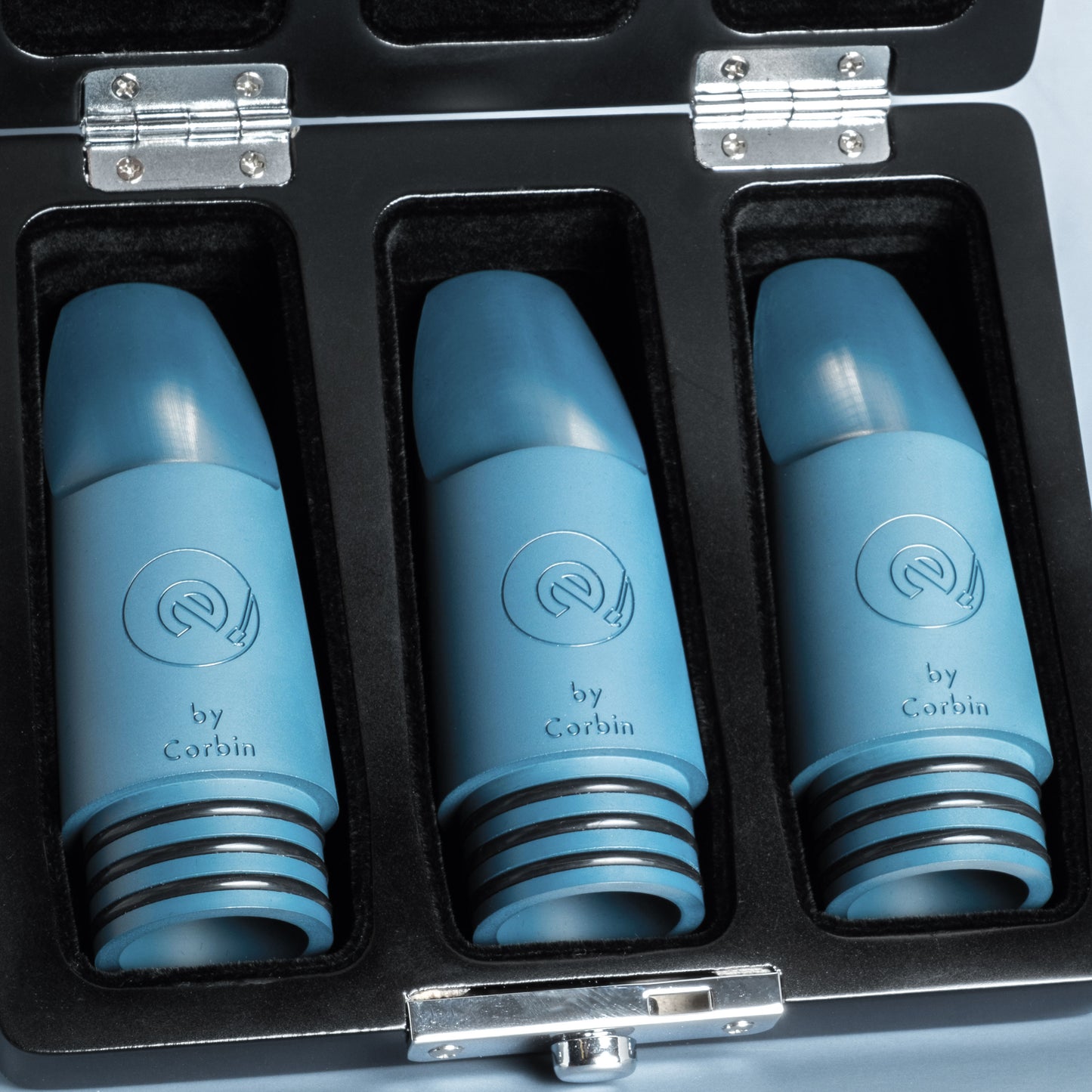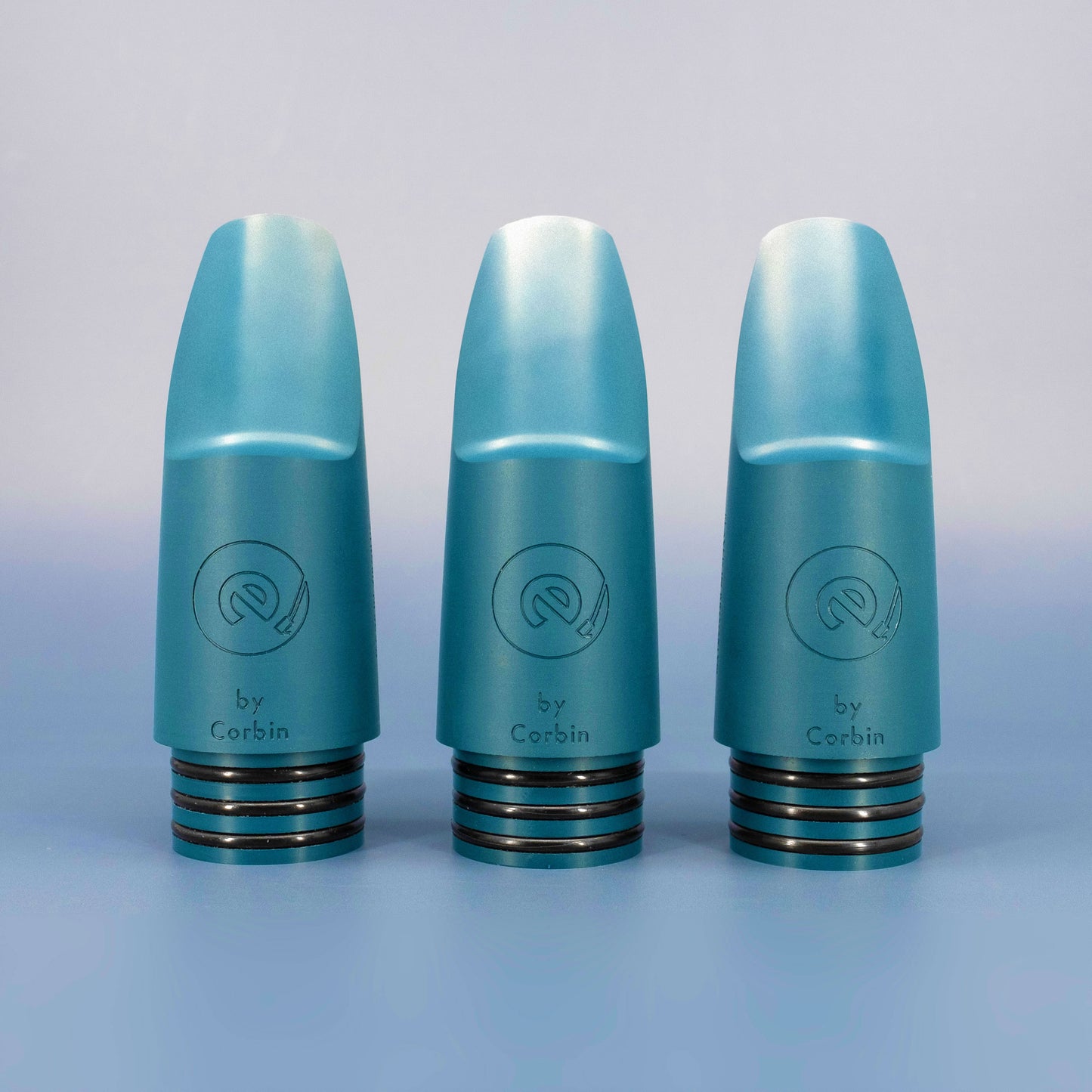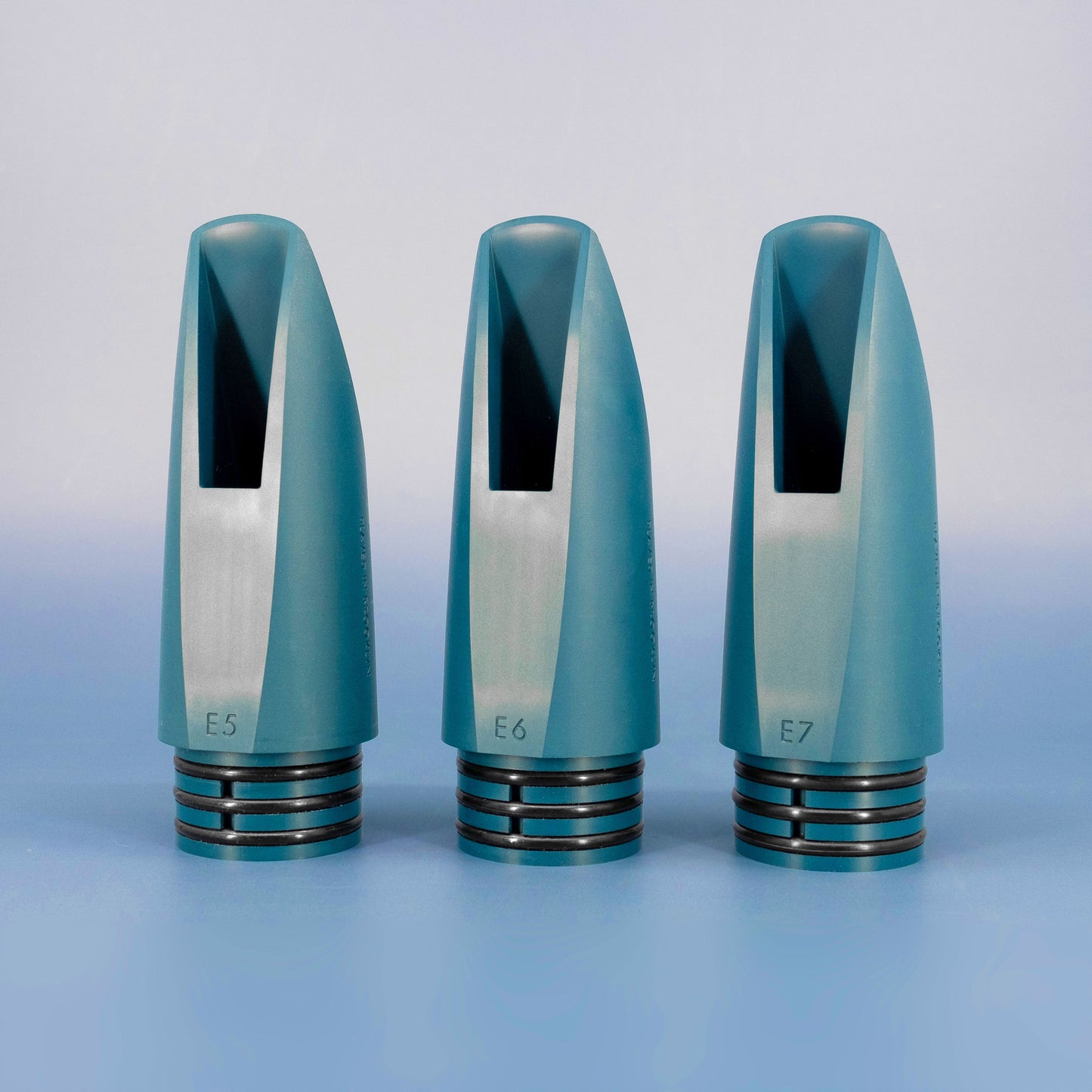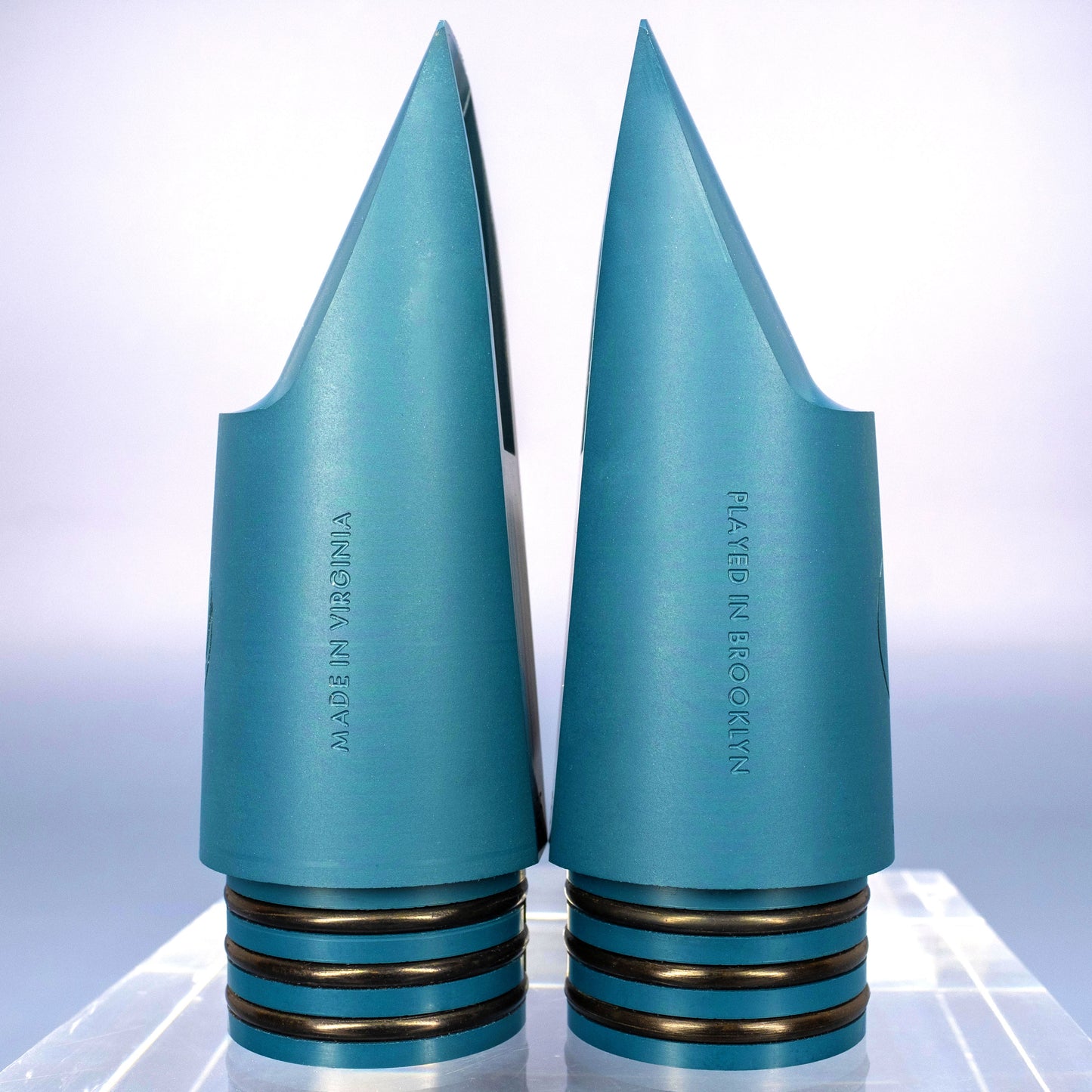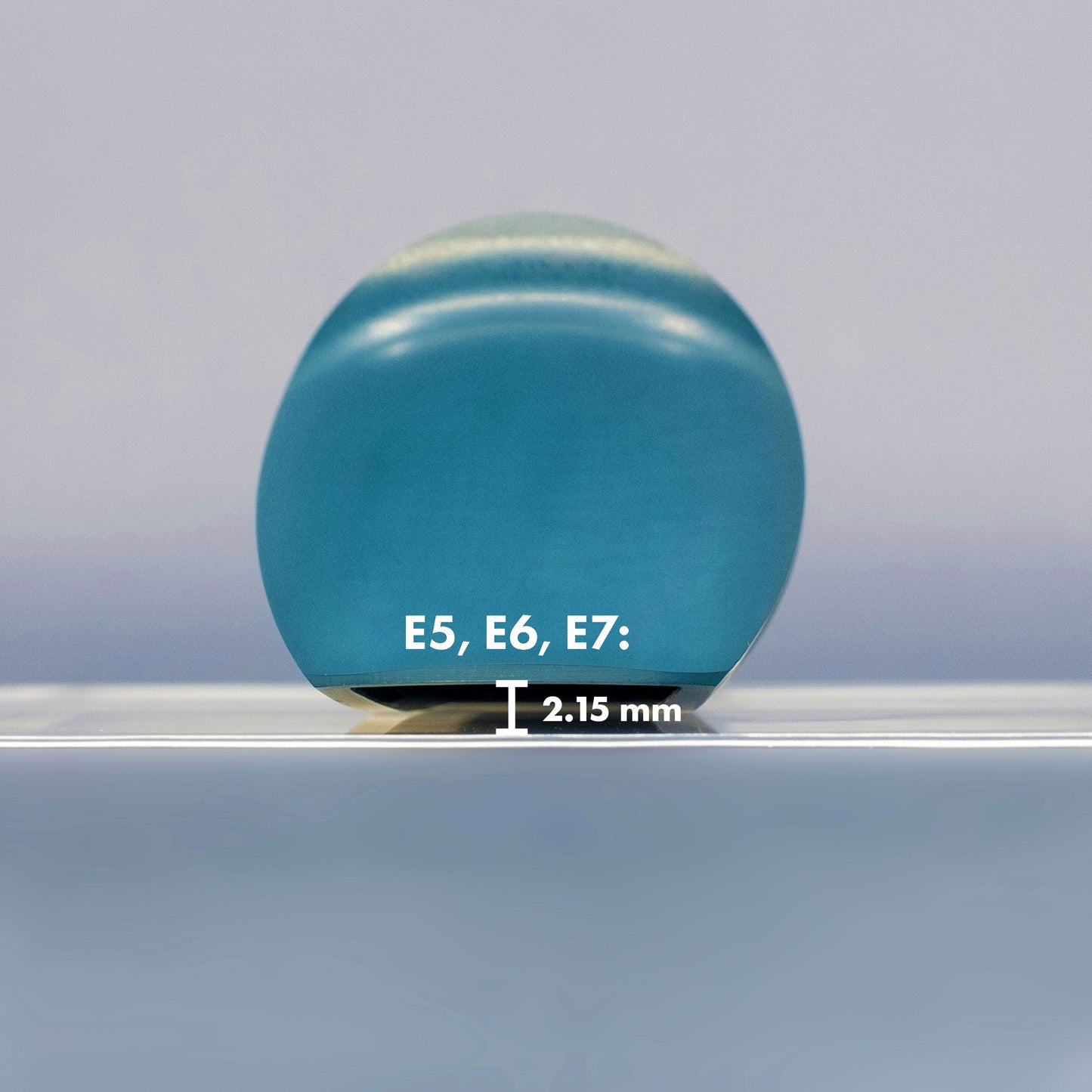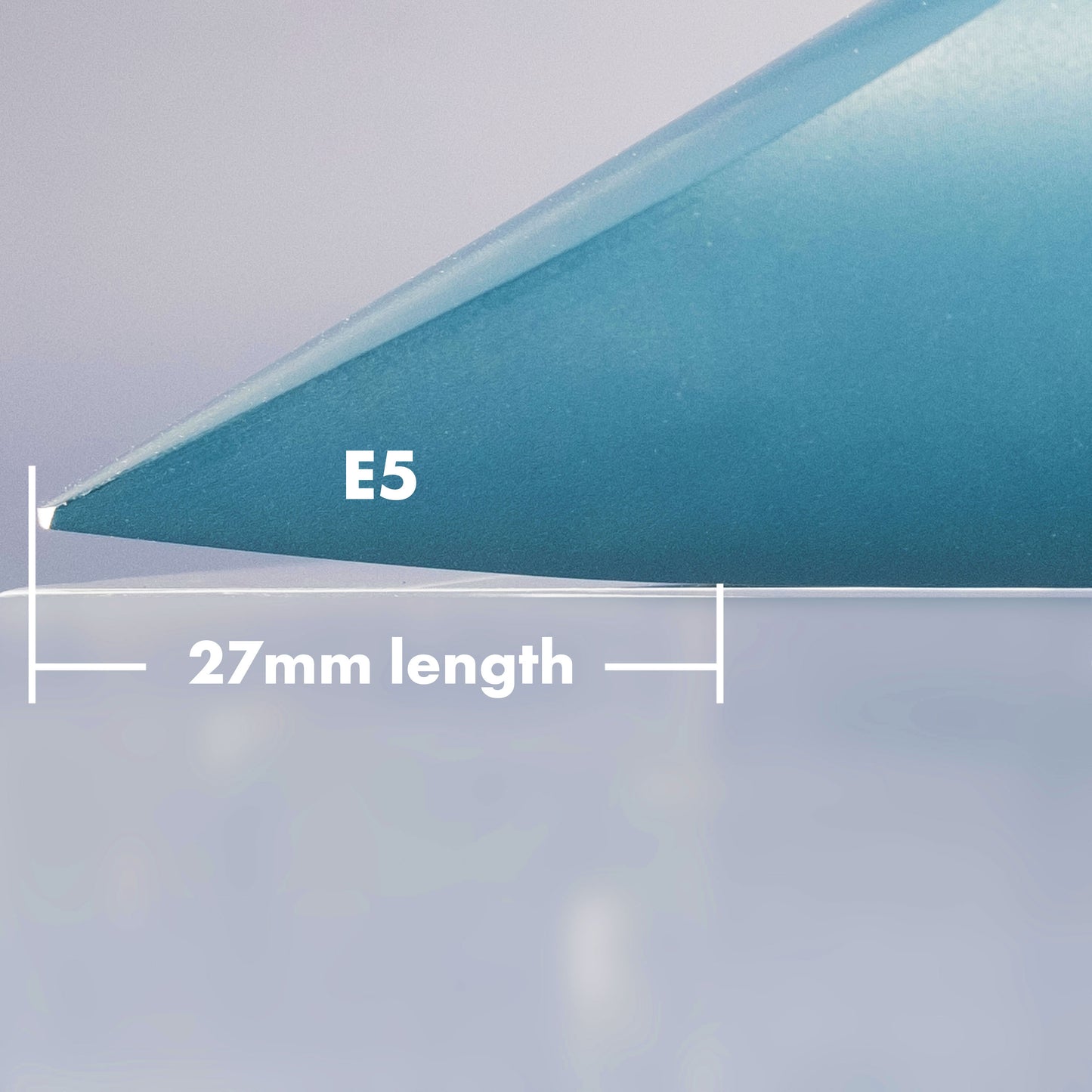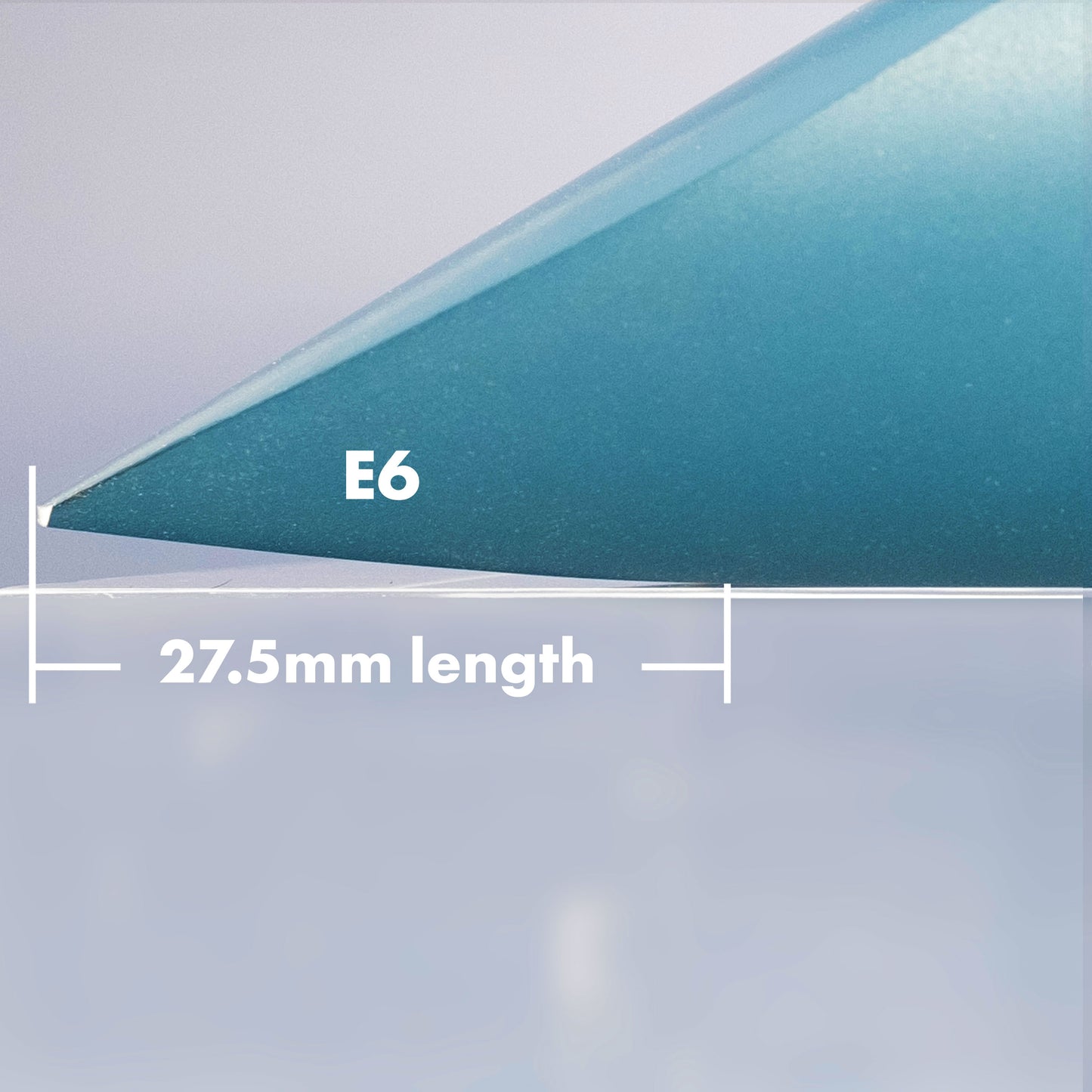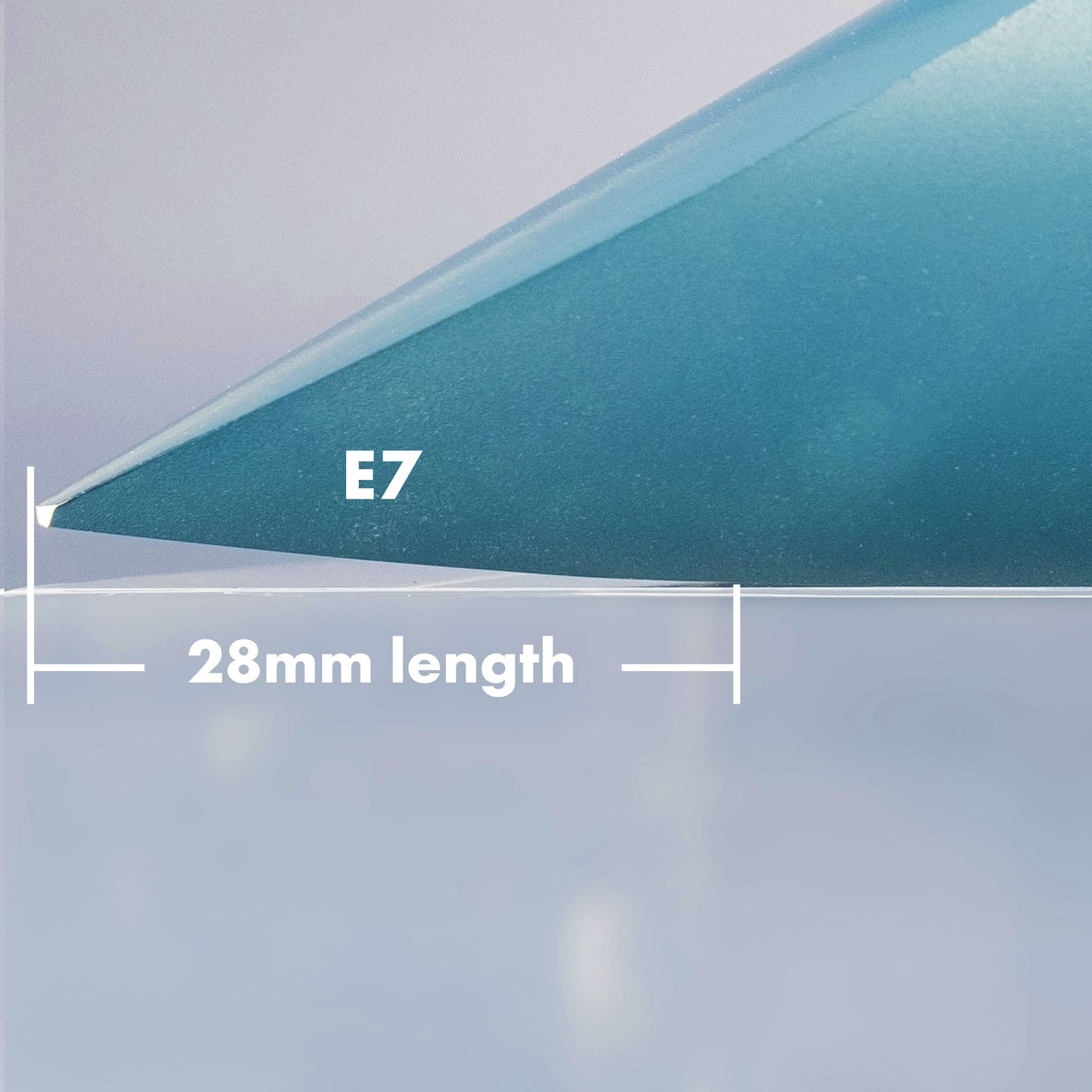Earspasm Bass Clarinet Mouthpiece
Earspasm Bass Clarinet Mouthpiece
Let me start with a quick story — trust me, it's worth it, and helps explain why I made these mouthpieces.
When I met Franklin Cohen (Cleveland Orchestra, 1976-2015), I learned pretty quickly that he changed mouthpieces like most people change reeds. Like, he'd swap mouthpieces in the middle of concerts.
But I will never forget what I saw during one concert.
He was playing Respighi's Pines of Rome. You know, the one with this beautiful, quiet, stressful solo. And I noticed Frank was struggling with his reeds during the concert. Right before he had to play the solo, he took his ligature and reed off his mouthpiece, pulled out a sheet of sandpaper, and proceeded to reface his mouthpiece on stage right before playing the solo. I don't know about you, but that's the most baller thing I've ever seen, before or since.
After the concert, I asked him, "Why didn't you just work on your reed?" He replied "The reed was great; the mouthpiece was the problem."
What an interesting concept. If you know you have a good reed (because it was good yesterday, for example) then yeah, it's not the reed...it's something else.

And so I began to experiment. I bought three or four of the same mouthpiece, and took them all to Everett Matson (shown on the right in his workshop/living room). My request: put my facing on them, while duplicating the inner dimensions as best he could. Once he finished that, I asked him to make one a little longer, and one a little shorter, which he did — all the while keeping the tip opening the same.
It worked for me — for years — so I decided to make this "system" for anyone else who wants to give it a shot.

I reached out to Brian Corbin, another bass clarinet player who is known for making stellar bass clarinet mouthpieces. The challenge: let's figure out how to make this type of mouthpiece — one that has the same interior and exterior dimensions except for the facing length — but minimize the hand-finishing to make it affordable. Brian found the right high-density rod rubber (yes, it's blue, because I like blue), and CNC machinery needed to mill that rubber into these mouthpieces to an accuracy of 10 microns (0.01mm). Then, using a 3D scan of the design we hand-finished together, we tested the process. It worked!
The result is a mouthpiece with a full-bodied sound, that is extremely responsive and controllable. If you play in an orchestra, you'll like the fact this mouthpiece has a ton of color (dark, bright, and everything in between; Stravinsky and Rachmaninoff will love you). If you play in a band (marching or punk rock) you will have a mouthpiece with a ton of headroom, that can really pump out the volume without you having to force. Even multiphonics and other extended techniques become easier to produce.
Three mouthpieces. One "feel."
So yes, there are three mouthpieces you can choose from, and you'll get all three to try. Obviously I'd be thrilled if you kept more than one, and if you need a reason to do that, here are a couple of rationales:
- Weather changes, so reeds change. If a reed was good yesterday, but not today...switch your mouthpiece. For example, if that good reed is too hard today, use a longer facing (E7). Too soft? Use the shorter facing (E5). Experiment.
- In a box of "Vandoren 3s," you get quite a variety of strengths, amiright? Having a variety of mouthpieces will get more reeds working out of each box. No, I'm not kidding.
But like I said, regardless of what you end up choosing, when you order them you get all three to try.
-
E5: 2.15mm tip; 27mm length
- E6: 2.15mm tip; 27.5mm length
- E7: 2.15mm tip; 28mm length
Of course, no mouthpiece is for everyone. Try them for 7 days. if you don't agree that they offer the best sound and feel for your bass clarinet, just send them back!
FAQ
Q: What is the best reed to use on these?
A: Vandoren V21 bass clarinet reeds, strength 3 or 3.5. You can even go as low as 2.5, depending on your embouchure. If you like Légère reeds, I'd recommend somewhere in the 2.75-3.5 range.
Q: What is a "facing length," and why should I care?
A: Scroll through the photos on this page. You'll see how each mouthpiece has a different distance between the tip and the table (the flat part of the mouthpiece that the reed sits on). This length has a bearing on how much of the reed gets to vibrate. Assuming the same tip opening (2.15mm in this case), shorter facings mean less of the reed vibrates...which means the reed feels harder. Longer facings have the opposite effect.
Q: How long is your trial period?
A: One week from the date you receive your mouthpiece(s). Important note: We ship internationally, but we do not accept international returns.
Q: Can I keep the cool mouthpiece case these come in?
A: Yes, if you buy all three mouthpieces. But if you need to send any back, you'll have to send the case, too. We also have the cases for sale if you'd like one of your very own!
Q: Do I have to buy all three?
A: Nope. You can keep only the one(s) you like — or you can return them all.
Q: I just paid for one, can I keep more?
A: Of course! Contact me and I will send you a pro-rated invoice for the extra mouthpiece(s).
Q: If I return them, do I have to pay a fee?
A: Only shipping fees. Everything else is fully refunded!
Q: I have another question you haven't answered here.
A: No problem. Contact me!
Não foi possível carregar a disponibilidade de retirada.
This mouthpiece offers similar color and sound quality compared the B50, but has much more control and a more focused sound. I personally find the E5 to have a good match with the V21 2.5. Although I did find the left hand chalumeau E and F to be quite flat and hard to tune.
Again, I think this mouthpiece provides much more consistency and tonal depth/core. I think it definitely justifies the price.
These pieces lit up like a Christmas tree!! 🔥
I’m not a mouthpiece switcher but you never know what could happen in 20 years. The great Harry Carney quipped, all you have to do to select a Bari mouthpiece is see: 1) How soft can you play a low Bb 2) How loud can you play a High F.
If the piece passes these two tests, grab it.
All three of these Lowenstern pieces are the bomb!!
Bravo 👏 Bravo 👏 Bravo 👏
I got the opportunity to buy one of these mouthpieces and they are all amazing. The clarity you get while playing is amazing and it’s very open allowing the higher range to speak freely. Great mouthpiece and I can’t wait to make more music with it.










